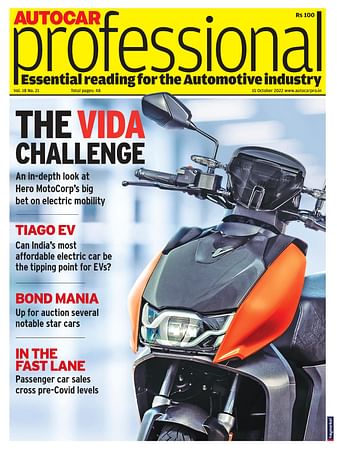Skoda to unveil Karoq compact SUV on May 18
All-new compact SUV, based on Volkswagen’s MQB platform, will offer exceptional space in the interior and boot, new driver-assistance systems, full LED headlights and a digital instrument panel.
Skoda is to replace the Yeti crossover with an all-new model called Karoq. According to Skoda, the Karoq name and spelling have been derived from the language of Alaska’s indigenous people. It is a combination of the terms ‘Kaa’raq’ (car) and ‘Ruq’ (arrow).
The world premiere of the new compact SUV will take place in Stockholm on May 18. “The Škoda Karoq is a completely newly designed SUV that sets new benchmarks for our brand and its segment in every way. With this new SUV, we are taking the next logical step in our SUV strategy,” said Skoda CEO Bernhard Maier.
“It is important to us to give our new SUV a powerful name. It also forms part of a naming approach across our SUV models,” said Werner Eichhorn, Board Member for Sales and Marketing. “At the same time, we are creating exceptional and memorable brand recognition value for our customers,” continued Eichhorn.
Near-production test mules have been spotted at multiple instances across Europe. A first set of teasers have also been released. The second-gen Yeti or the Karoq’s design is completely different from the outgoing model and more in line with the brand’s larger SUV, the Kodiaq.
The Karoq will be built on the Volkswagen Group’s MQB platform, which also underpins models, including the Audi Q3, Seat Ateca and the Volkswagen Tiguan, and may borrow autonomous driving technology from the Kodiaq.
Ace in space
The compact SUV measures 4,382mm in length, is 1,841mm wide, and 1,605mm tall. The long wheelbase of 2,638 millimetres (all-wheel version: 2,630mm) gives the Karoq a comfortable stance on the road while the increase in size benefits passengers. The legroom is 68 millimetres.
According to Skoda, the Karoq will offer exceptional space in the interior and boot, new driver-assistance systems, full LED headlights and – for the first time in a Škoda – a digital instrument panel. Five engine variants are available from 85 kW (115 hp) to 140 kW (190 hp), of which four are new. Features such as the rear-seat VarioFlex system and virtual pedal for the hands-free opening of the boot are additional smart ideas for the brand’s new compact SUV.
The luggage compartment has a capacity of 521 litres with the back seats in place. With the rear seats folded down, the volume increases to 1,630 litres. In combination with the optional VarioFlex rear seat, the boot space is variable and can hold between 479 and 588 litres. The seats can also be completely removed – and the SUV becomes a van with a maximum loading capacity of 1,810 litres.
RELATED ARTICLES
Sept 2024 From R&D incentives to EV infrastructure: What auto components industry expects from Budget 2024
Sept 2024 From R&D incentives to EV infrastructure: What auto components industry expects from Budget 2024
US car majors hit the brakes on driverless cars
Ford Motor and Volkswagen to close self-driving startup Argo AI, due to lack of technology and clear regulations.
Autoliv and Geely to develop advanced safety tech for future vehicles
Scope of cooperation includes safety for high-level autonomous driving, intelligent steering wheel technology, a 360deg ...






 By Autocar Pro News Desk
By Autocar Pro News Desk
 30 Apr 2017
30 Apr 2017
 3442 Views
3442 Views


















